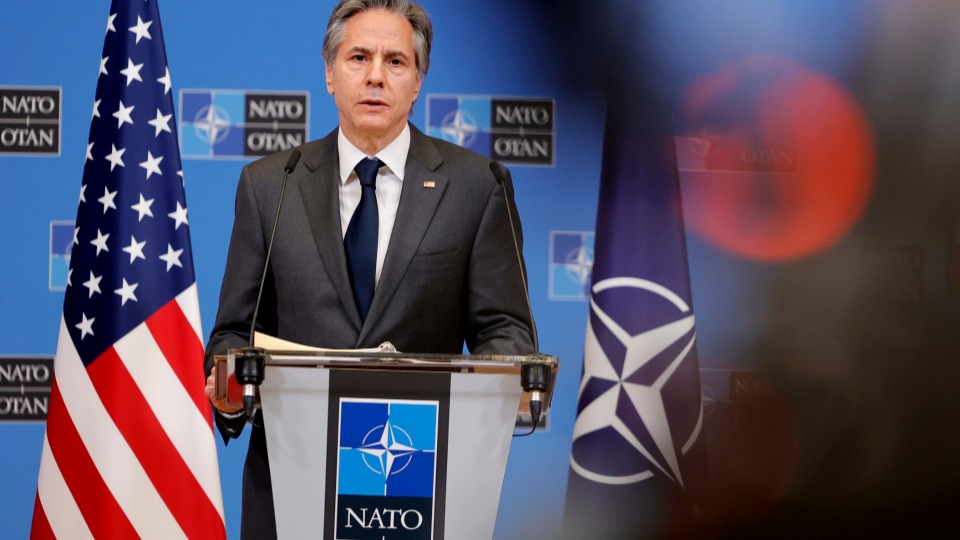
The U.S. has become more open about its intent to use the war in Ukraine as part of a long-term war against Russia, a war aimed at significantly weakening that country. Russia has actually contributed to that U.S. goal by mounting its illegal invasion of Ukraine that, at least in its opening stages, did not go well for them. Some say the Russian government expected a quick victory, but it did not happen that way.
As they failed to take Kiev, Russian forces stepped up the bombing and shelling of cities in the east. They have control now of two-thirds of the territory in the Donbas in eastern Ukraine and parts of the country’s south.
Hoping to win some big victories in these regions, the Russian military has lately left cities like Kiev and Lvov in the west relatively untouched. They have been held back by a combination of fierce resistance from Ukrainian forces, supplied with a huge flow of billions of dollars worth of weaponry from the United States and NATO, and reported logistics problems of their own.
U.S. playing the long game
While this describes the current status of combat, the U.S. is making it clear that its ambitions go much further than just helping Ukraine finish the battle and beat back the aggressors. The U.S. originally said it was simply helping Ukraine defend against the invasion but now has clearly exposed that its aims are much bigger. The U.S. strategy is one of weakening Russia itself to the point that it no longer can stand in the way of U.S. plans for domination in Europe.

This intention was signaled clearly when the Pentagon recently called in all of the top armaments producers in the U.S. and demanded that they supply it with weapons to be used in a protracted war with Russia.
In only the last six weeks, some $50 billion has been approved for even more and higher-grade weaponry to use against Russia. The same Congress that is approving that money adjourned last week without setting aside a single penny to fight the war on the pandemic here at home.
Meanwhile, U.S. Defense Secretary Lloyd Austin has reportedly been calling Russian Defense Minister Sergei Shoigu to set up meetings to discuss the war. Excluding Ukraine from the talks was apparently not a problem for the U.S., even though Washington continues to deny it is in a proxy war with Russia.
Any talk about negotiations to actually end the war, however, has been either ignored or denigrated by the Biden administration and the Pentagon. They paid lip service support to Russian and Ukrainian talks earlier in the war but always coupled that with firm predictions that negotiations would go nowhere. By discounting negotiation and instead focusing on more and more weapons that fuel the fires in Ukraine, the U.S. increases the risk of a much wider and more dangerous war.
Russia’s goal in Ukraine is actually much less grandiose and expansive than the U.S. goal, which is both to push Russia out of Ukraine and then weaken the former into something that is a mere shadow of its present self. The Russian state is carrying out its aggression, including the bombing and shelling of cities, in order to gain control over a part of Ukraine and to try to pull that country, as a whole, away from the West.
It looks like Russian territorial gains will be limited to the Donbas, a small area of the south, and Crimea, which they already hold. The Putin government is under no illusions that it can attack NATO or the Pentagon that controls it, nor would it even want to. U.S. military and economic might dwarf that of Russia.
Rallied against Russia
The U.S. is nevertheless not alone in its strategy to weaken Russia. The U.K., Poland, and other NATO countries have been involved with the U.S. since the beginning of this war. Until this past winter, there was talk in Europe of the countries there building up their own defenses so they would not have to rely upon the U.S., given their concerns of a possible Donald Trump comeback.
The U.S. turned that around quickly and has managed to get European countries to spend more than ever on defense, but rather than using it to express their independence, they so far appear to be allowing the U.S. to call all the shots about how and where to spend that money. They are also acquiescing to the placement of dangerous U.S. weapons on their territory, including nuclear-armed or nuclear-capable missiles. This is a major victory for a U.S. imperialism determined to control what happens first in Europe, then in Russia, and later in China and elsewhere.
What the U.S. is committing to this war goes far beyond just tens of thousands of anti-aircraft weapons. It is devoting a full-time intelligence operation to tracking down everything Russia is doing in or near Ukraine. That intelligence was used to sink the Moskva, the flagship of Russia’s Black Sea Fleet, and it was used to kill a host of Russian generals operating in Ukraine.
In addition, the U.S. has conducted an unprecedented financial war against Russia, one which it is unlikely to stop even if the fighting in Ukraine were to end.
Across the board, top U.S. officials and officials of countries that are part of the U.S. effort against Russia have made it quite clear that they back a war that is about more than just saving Ukraine.
U.S. Defense Secretary Austin has declared that the goal is “to see Russia weakened.” House Speaker Nancy Pelosi has said, “Ukraine is defending democracy writ large for the world. And Republican Senate Minority Leader Mitch McConnell has declared of the unprecedented war spending, “We absolutely have to do this.”
Liz Truss, Britain’s foreign secretary, called for expanding the aims of the war to include the eviction of Russia from Crimea, a territory that returned to Russia in 2014 following an invasion and a widely-criticized referendum. What Truss is saying is that it is the intention of the warriors against Russia to go beyond restoring things to where they were when the invasion began in February. She is calling to “evict the Russians from the whole of Ukraine.”
Even that is a bigger goal than Ukraine’s NATO allies had enunciated in the beginning. Germany’s navy chief, Vice Admiral Kay-Achim Schönbach, was forced out of his position earlier this year after saying that Crimea was not even in contention and that on the basis of its history, language, and the 2014 plebiscite, it should remain as part of Russia.
Stepping up the carnage
The Pentagon meeting with arms producers was followed by a pledge from President Joe Biden that he would quadruple funding for weapons for Ukraine. Since then, he has kept that pledge and has talked about sending even more.
The actions taken to prepare for a long-term war against Russia coincide with the total jettisoning of peace talks.
In the early weeks of the war, Ukrainian President Volodymyr Zelensky and even some right-wing nationalist Ukrainians were talking about a neutral military status for Ukraine and negotiations around the status of Donetsk and Lugansk in the Donbas. Ukraine said it would cease its campaign for NATO membership, which was a key security issue for Russia. Zelensky said at one point that, as president, he had to think seriously about ending the war because of the many lives being lost.
The U.S. and its allies then shut down all the channels that there were to Moscow. European presidents stopped going there. The talks between Ukraine and Russia were essentially shut down, as the U.S. promised the weapons Ukraine said it needed to win the war outright.
No one is talking about neutral status for Ukraine anymore or about internationally-monitored talks regarding the Donbas or about international protection for Ukrainian neutrality. All the talk now is talk of continuing the war until it is “won.”

With the U.S. having the publicly-declared goal of weakening Russia and the lack of any negotiations, what we have is a war that is now far more dangerous than when the Russian invasion first began.
Russia is being told that there is no way out of the present disaster facing it short of economic destruction and international humiliation. Both Russia and the U.S. are armed to the teeth with nuclear weapons. Russian leaders have put their nuclear forces on high alert, the U.S. has placed nuclear-capable missiles right on Russia’s borders, and, worst of all, the U.S. has canceled the two remaining nuclear disarmament treaties agreed to by the U.S. and the Soviet Union during the Cold War.
Does this not sound like a possible prelude to an historic nightmare?
Even if no one ever intends to use those weapons, the chances of an accident or misunderstanding, in the current atmosphere of war, are reason enough to stop the grandstanding about “winning” that is coming from top U.S. officials and get down to supporting serious peace talks.
The gains from a long-term war to weaken Russia are outweighed by the danger that it will increase the chances of a war from which we cannot recover. They are also outweighed by the gains the people of the world will make if there is peace and trade between the U.S. and Russia.
Already there are disasters in this war from which there will be no recovery. Major parts of eastern Ukraine are being ruined as this is written. Tens of thousands of Ukrainians are dead. Tens of thousands of Russians are dead. The brotherhood and sisterhood shared by Ukrainians and Russians for many decades have been destroyed.
As the war continues, the danger of more escalation increases, with the ultimate horror of nuclear war becoming more and more possible.
The U.S. should not be following a strategy of expanding the war by pumping in more and more weapons month after month. It should have a policy that puts negotiations to end this war front and center.
When our nation’s leaders come out to declare that the fighting now underway in eastern Ukraine is the penultimate war to save democracy, they are saying something that is both false and reckless. Democracy and just about everything else can be lost if the U.S. doesn’t stop conducting its long-term war against Russia.
As with many news, analytical, and op-ed articles published by People’s World, any opinions reflected in this article are solely those of its authors.
Read further People’s World coverage:
> Russia may have fallen into a ‘Ukraine trap’ set by the U.S.
> U.S. ramps up war talk as it points more missiles at Russia
> Why a Ukraine ‘no-fly zone’ would mean the end of the world…literally
> As U.N. pleads for ceasefire, U.S. prepares for long war against Russia












Comments